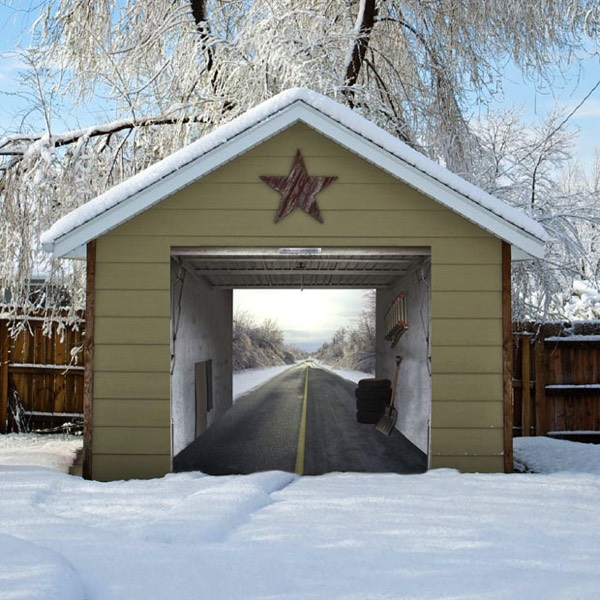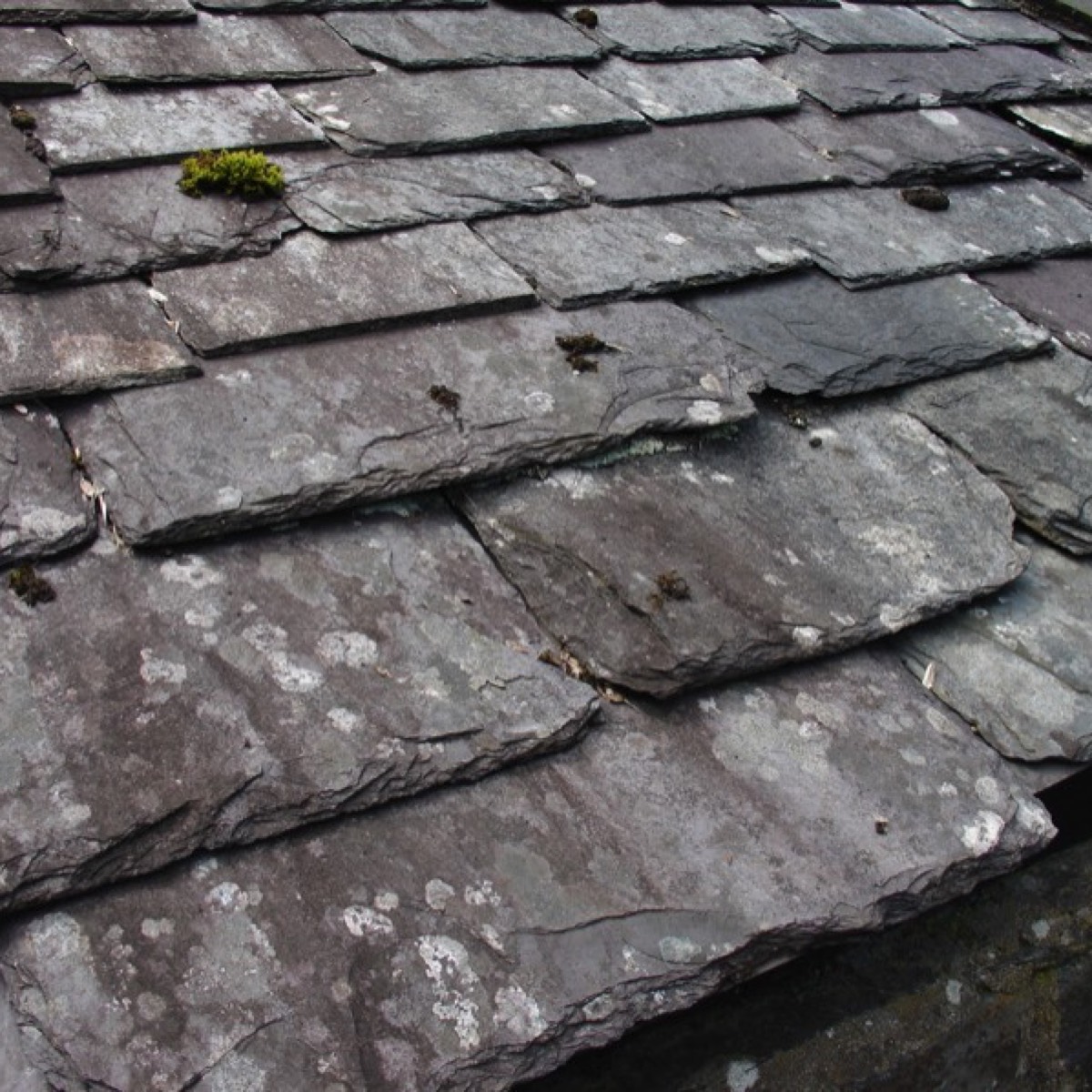How Much Does it Cost to Build a Garage?

| Job | Description | Labour |
| 1 | To buy and construct a prefabricated concrete garage with an asbestolux sloping roof, on a new concrete slab, will take two blokes about a week. This includes planning fees… | £4500 |
| 2 | To build a “facing brick” garage with a flat roof and up and over door. This will take two blokes about 10 days. This includes planning fees… | £4500 |
| 3 | To build the above with a pitched interlocking roof add | £1200 |
| 4 | To build a lovely stock brick garage with a pitched plain tile (smaller tiles)
roof and wooden hinged doors. | £7500 |
Information Sheet on Building a Garage
Garages can be built in all kinds of sizes and from a variety of materials. Your chosen design will be influenced by your specific needs and the availability of space and financing.
Building a garage is a major construction project and even the simplest one will necessitate significant expenditure, so it’s a good idea to think long and hard about what you hope to achieve. A good starting point is to decide where the garage will be in relation to your home and the advantages or disadvantages of the three main options.
Attached
This is usually a good idea, as it can be the cheapest option as one of its walls is already built and it’s relatively simple to extend your domestic services such as electricity and water. You can also put in a doorway directly from the garage into the house, which is a real advantage on those many dark, wet and windy nights.
However, you may need to lay the floor of the garage over existing services to the house, such as drains and manholes and although this may not be relevant if you are actually planning to park your car in your garage, if you are hoping to use it as an office it may entail time and expense re-routing or redesigning things.
Detached
This will be more expensive and the price will be influenced by how remote the garage will be from the house and whether you will want to take the electricity and water supplies all the way to it. It may also need drainage both for tap water and rain water.
Integral
An integral garage is one created within the footprint of the house. This arrangement is mostly seen incorporated into a new build, but could also be part of a two storey extension, or due to a change in use of an existing space. This might be undertaken when there is nowhere else to park close to the house, either on street, or within the grounds of the property.
SIZE
Generally, cars are getting bigger. Park a new mini next to one from the sixties and you could almost get the latter in the new one’s boot. So, when you design your garage, make sure it (and its door) will accommodate the largest car you are likely to own. Many families have multiple cars. Do you want to park them all in the garage? If you are looking to the future, also give consideration to what prospective buyers may require. This will be dependent on the amount of space (and money) you have available, of course.
If you plan on using your garage for multiple purposes, factor these into the equation also. Again, looking to the future. If you are thinking of converting to a Grannie Flat or a Student Pad at some point, you should scale accordingly.
DRIVEWAYS
It is illegal to simply drive across a pavement and park on your property, so bearing this in mind, you may need create a legal access route to your new garage. You will need planning permission if you want to create a crossover from the roadway, across a pavement/footpath and into your property. The usual method, once permission has been granted, is for the local authority to oversee the creation of a dropped kerb onto the road.
Rules and Regulations
Just because you now have easy vehicular access, doesn’t mean that you also have carte blanche to come and go as you please!
You have no legal right to be able to park outside your property, or to gain access to it from the highway. If you come home from work and find that someone has parked across ‘your’ crossover, they are entitled to do so and you have no means of recourse. However, it is illegal to park across a driveway if you are preventing a vehicle from leaving the property.
MATERIALS
Potentially, there are several materials to choose from. The following examples are in order from least to most expensive:
Wood > Pre-fabricated concrete > Rendered blocks > Rendered bricks > Exposed brick > Stone
If your garage is to be built either attached, or close to your home, then it would probably make aesthetic sense if you used the same material as the house walls. However you may not be given a choice. If you live in a Conservation Area where most of the houses are two hundred years old and built of random coursed sandstone, then it is most unlikely that you could make your garage out of any other material.
Bricks come in three types:
Common bricks are not really meant to be visible, they don’t have a “good” side.
Facing bricks have two good faces (a side and an end). The other two faces are just as per a common brick.
Stock bricks have four good faces. They are made completely differently and cost a lot more.
ROOFS
Flat or Pitched?
Again, cost is relevant but you should also try to choose a roof style which is compatible and sympathetic with the walls. An expensive stock brick garage with a flat roof might be a bit incongruous.
Without a shadow of a doubt, pitched, tiled or slated roofs, leave felted flat ones standing. They look better and take about 4 times longer (60 years) before they start to leak.
If the garage is prefabricated concrete it is likely to come with a pitched roof. Don’t worry if this looks like it’s made out of asbestos because it isn’t. It just looks like it.
If you’re going for pitched, try and copy the type of tiles or slates on the house, providing you like them of course.
Also if you have a pitched roof, you can put a solar panel on it and you can store all those ridiculous planks of wood (you are never going to use) up in its rafters!
DOORS
Most garage doors come in standardised sizes, so you should be extra careful that your chosen door is the correct size for your door opening and that when fitted, the opening will be wide enough and high enough to allow your car to get inside! The good news is that these days they are available up to 7500mm wide and 3000mm high.
Here is a list of some of the types of door available:
Side Hung
These open outwards like a house door, but there are two of them for each garage opening which can be split, so that each is a different width. This is useful if you just want pedestrian access on occasions.
They can maximize the space within the garage when it is at a premium due to them opening outwards.
Side Sliding
These are quite new and slide ‘round the corner’ and against an inside wall of the garage. They do not take up any of the roof space of the garage, thus leaving more room for you to store your surfboard! They can also be opened just enough to allow you to walk into the garage and you can do this standing full height, unlike with the partially open ‘up and over’ door, which you have to crawl through!
Up and Over
The whole door is rigid and is opened up and into the garage roof. The mechanism takes up a bit of room inside the garage and you have to be extra careful that it will leave enough headroom to accommodate your vehicle, as the way they open reduces the height of the opening.
Sectional
Similar to the ‘up and over’ but it has horizontal hinged sections which allow the door to fully retract into the garage, leaving maximum headroom. They are perfect for automating.
Roller
These are a bit like a giant roller blind and they maximize the width of the opening. However, because of the way they roll up on the under face of the top of the opening, you should check that there is enough height to accommodate the retracted door and its mechanism.
Door Materials
Your choices include wood, steel, aluminium, fiberglass (GRP) and ABS (PVCu). Each bring their own qualities to the table and vary in their maintenance requirements. Some materials (and styles) can have windows and others cannot. Some are insulated and others are not. Therefore, please seek advice and take your budget and your preference into consideration along with the qualities of each material.
FORWARD PLANNING
As previously mentioned, many garages will eventually double up as multi-purpose spaces and often, they will morph into something that never sees a car pass its threshold. Ideally though, if you are going through all the enquiries and garage building processes, it’s far cheaper to get it right first time. If the authorities will let you build bigger and you have the space, go for it, even if all you do is store stuff you should really be chucking away.
Here are a few scenarios for your consideration:
Dedicated Space at the Back
This could be for use as an office, hobby room, cloakroom or storage and could be partitioned off from the garage area. Depending on the circumstances it could have a door and a window and water and electricity. You might even consider a water and a sewer line, which wouldn’t necessarily have to be ‘hooked up’ until they were actually needed. If your garage is attached to your house, this arrangement may be particularly attractive and not too expensive.
Heating and Insulation
Plenty of garages have the boiler in them. The only reason the hot water cylinder (if any) isn’t usually sited in the garage is the space it takes up and the long way the water has to travel before it reaches the house taps. Modern insulation can easily cope with pipes running between garage and house. If it’s all in the garage, it is generally easier to maintain, leaks don’t matter as much and it frees up valuable space in the house.
You can still put a radiator or two in though even if the boiler is in the house. The car starts easier in winter and you’ll be nice and toasty pursuing your favourite pastime making that Spanish Galleon out of matchsticks.
Dwelling Standard
Now we are really thinking ahead. If there’s a chance you may want to convert the garage into a habitable space in the future, then it’s cheaper to build it properly in the first place than to convert it later.
This is all down to insulation. Insulation requirements for dwellings are being revised upwards all the time. No one knows for certain what they will be in the future, so you need to take very good advice. The floor and roof will certainly have to be insulated way beyond normal garage requirements. You should really have the walls built with an insulation filled 100mm cavity and be prepared to add to this internally, as the requirements increase.
Also if you’re building an attached garage that you may want to put a second storey on top of in the future, make sure the foundations are constructed to take the extra weight.
FAQs 'traffic light' guide
-
What's easy about this job…
Open or CloseIt's a large complicated job.
-
What's tricky about this job…
Open or CloseSticking to time-schedules - something always comes up!
-
Potential problems with regards to this job…
Open or CloseNothing drastic other than running over on time and cost.
For all job costs click on the appropriate section below:
www.buildingsheriff.com
Copyright The Building Sheriff Ltd 2017


